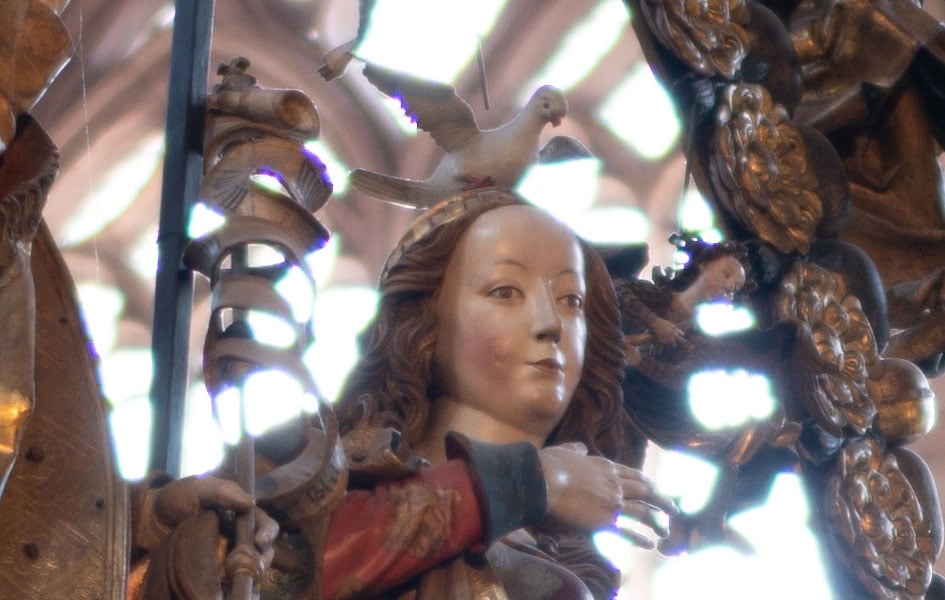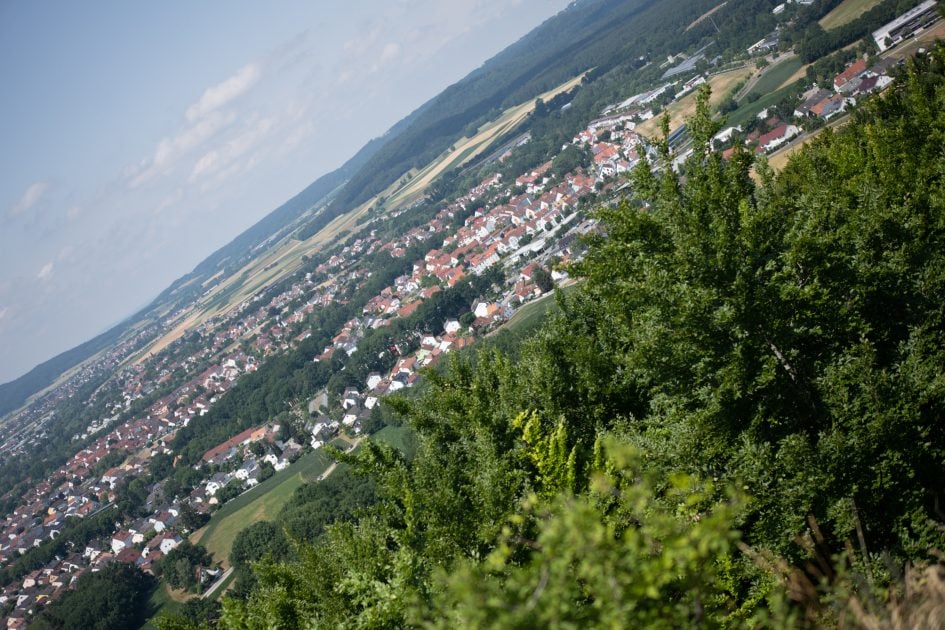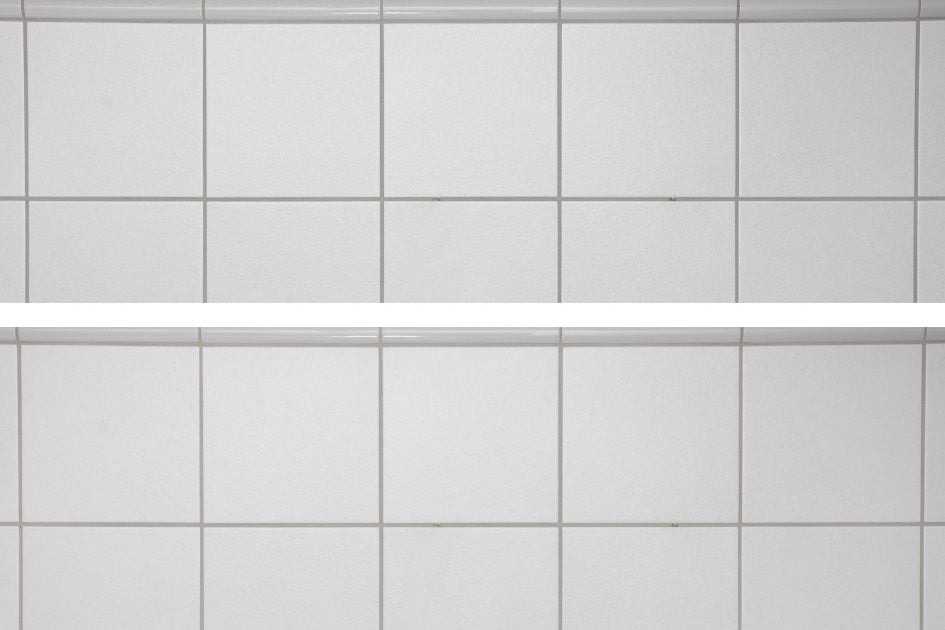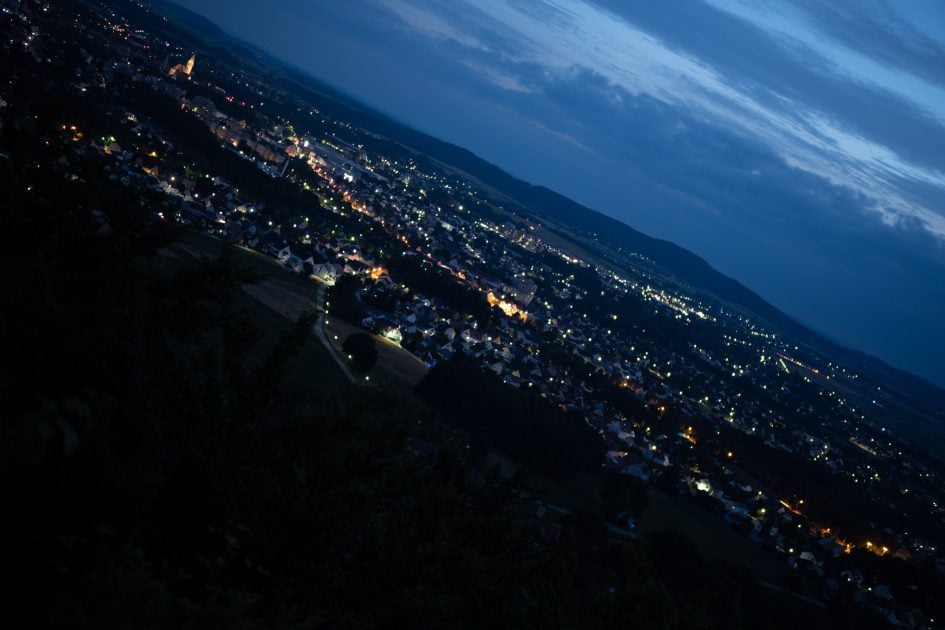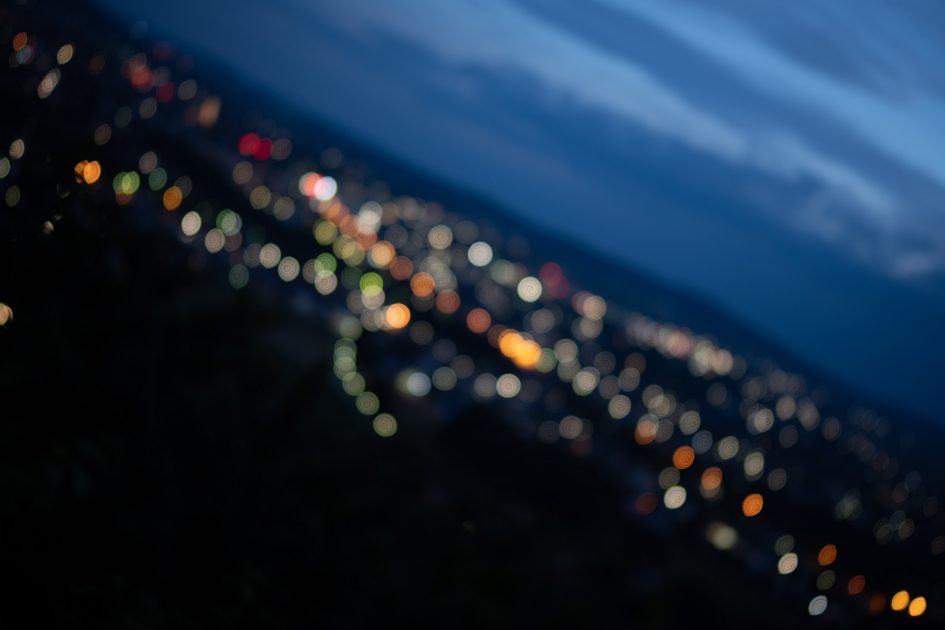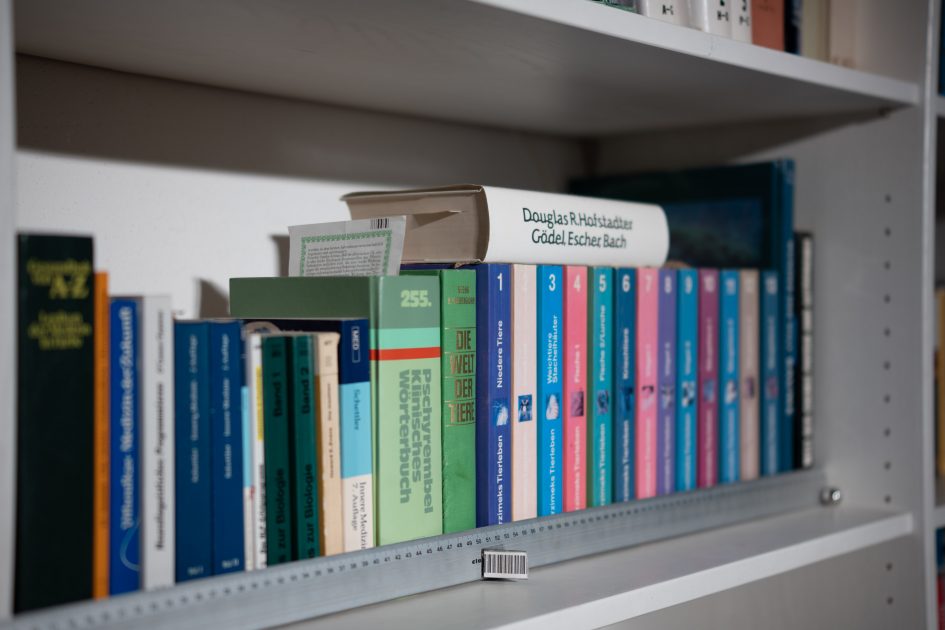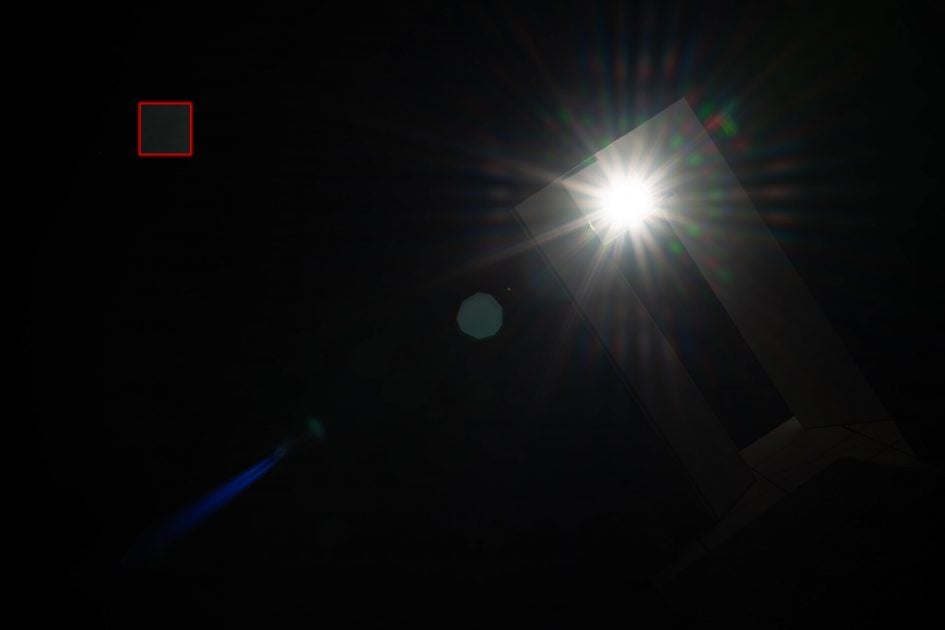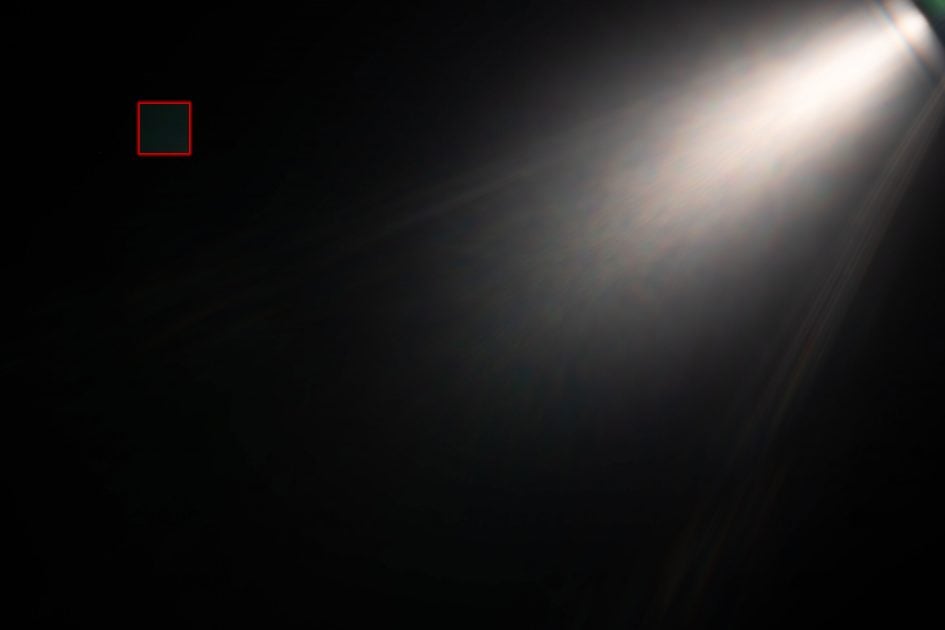Viltrox AF 50mm f1.8 review
-
-
Written by Thomas
Quality
Longitudinal Chromatic Aberration and focus shift
Lenses with focal ratios of f2.8 or larger are often prone to longitudinal color aberrations (loCA, a.k.a. “axial color” or “bokeh CA”). These show up as magenta coloration in the foreground and greenish hues in the background and are not easily corrected in post-processing. The Viltrox shows a bit of loCA up to f2.8 similar to the Z-Nikkor, less than the Sony FE but more than the Voigtländer.
Viltrox AF 50mm f1.8 Longitudinal Chromatic Aberration (loCA)
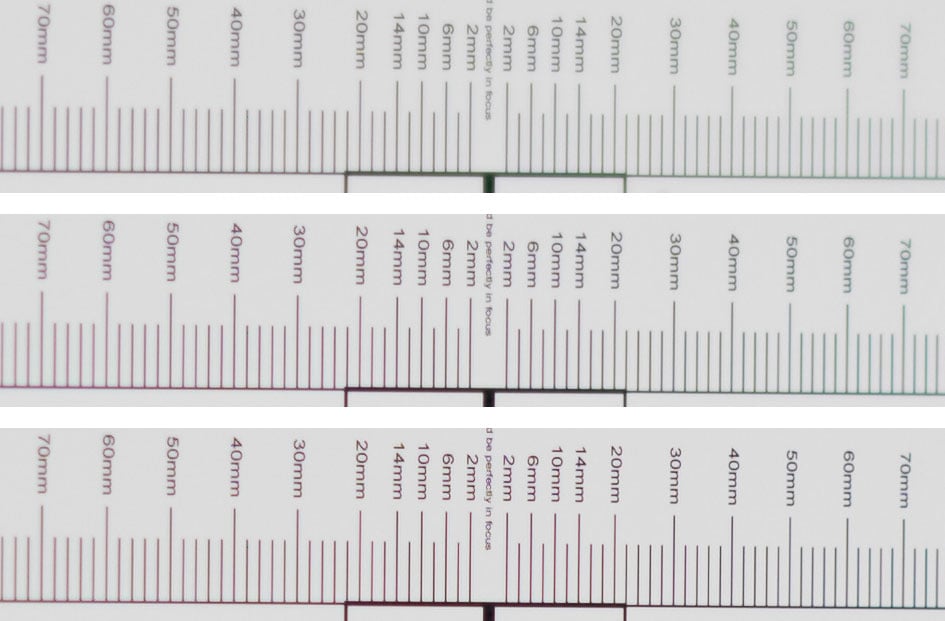
100% crops, from top to bottom: f1.8, f2.0, f2.8; left = foreground, right = background
When stopping down the background becomes sharper a bit faster than the foreground but I couldn’t detect focus shift.
The following real life shot shows that the Viltrox produces quite visible coloration around high-contrast edges in the focus plane or around background subjects:
Above: Viltrox AF 50mm f1.8 at f1.8; 100% crop; click image to access 4k version, here for large original
Sharpness and contrast
Let’s have a look at the theoretical performance of the Viltrox AF 50mm f1.8 and compare it to the performance of the Nikon Z 50mm f1.8 S, Sony FE 50mm f1.8, and Voigtländer 50mm f2 APO-Lanthar:
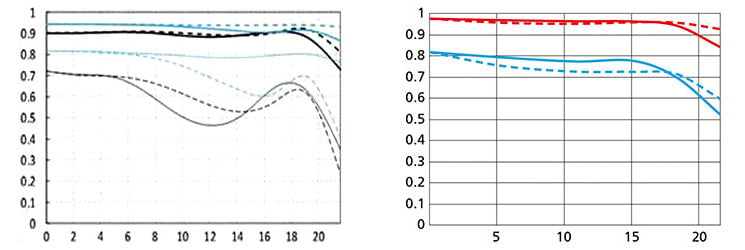
Above: Viltrox AF 50mm f1.8 (black=f1.8, blue=f8), Nikon Z 50mm f1.8 S (at f1.8)
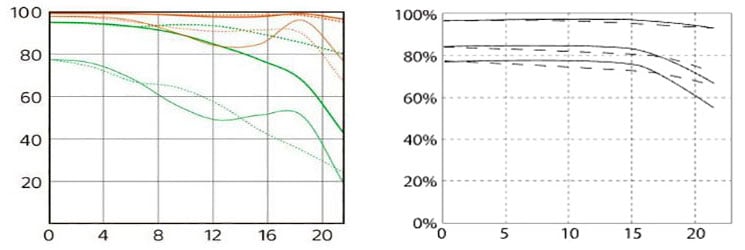
Above: Sony FE 50mm f1.8 (green=f1.8, red=f8), Voigtländer 50mm f2 (at f2.0)
The MTF charts of the Viltrox, Nikon and Sony lenses show the computed contrast-curves at 10 line-pairs/mm and 30 lp/mm, the Voigtländer charts at 10/30/40 lp/mm without influence of diffraction. Higher values are better (more contrast) and the closer the dotted and solid lines are together the less contrast dependents on the orientation of the test-pattern (less astigmatism). The x-axis displays the distance from the optical axis (=center of the sensor) in mm. I’ll show you the real-life performance at 4 mm (center), 13 mm (APS-C/DX-corner), and 20 mm (FF/FX-corner) on a 45MP Nikon Z7 body.
From the charts the Viltrox AF 50mm f1.8 (black lines) looks clearly worse wide open than the Z-Nikkor or the Voigtländer but a bit better than the Sony FE (green lines). Stopping down to f8.0 both the Viltrox (blue lines) and the Sony FE (red lines) improve significantly with the Sony FE now clearly ahead of the Viltrox. In fact the Viltrox at f8.0 looks like the Z-Nikkor at f1.8.
Let’s see how this theoretical performance of the Viltrox translates into real life results in the sharpness test based on Siemens-stars. Processing was done in Lightroom 11.4.1/CRAW 14.4.1 from RAW to Adobe Color profile with the built-in lens profile for Vignette Control and CA compensation applied. Noise-reduction is set to 0, sharpening to 50/0.5/36/10, with no extra tone, color, or saturation adjustment. White-balance was adjusted to a neutral white and I did some exposure compensation to make the brightness of all crops match. So you will not see light fall-off in the corners.
The following 100% crops show the Viltrox AF 50mm f1.8 from f1.8 down to f11 compared to the Nikon Z 50mm f1.8 S and Voigtländer 50mm f2 (both shot on a Nikon Z7) plus the Sony FE 50mm f1.8 shot on a Sony A7R II. With linear resolution of the 45MP Z7 sensor only 4% higher than from the 42MP A7R II, identical test set-up and identical RAW processing the comparability between the test-shots should be very good.
Viltrox AF 50mm f1.8 compared; 100% crop from center, APS-C/DX-corner, FF/FX-corner

Above: Viltrox AF 50mm f1.8 at f1.8

Above: Nikon Z 50mm f1.8 S at f1.8

Above: Sony FE 50mm f1.8 at f1.8

Above: Viltrox AF 50mm f1.8 at f2.0

Above: Voigtländer 50mm f2 at f2.0

Above: Viltrox AF 50mm f1.8 at f2.8

Above: Viltrox AF 50mm f1.8 at f4.0

Above: Viltrox AF 50mm f1.8 at f5.6; also available at f8.0, f11
At f1.8 the Viltrox AF 50mm f1.8 looks less sharp than the Nikon Z 50mm f1.8 S across the full-frame sensor and also less sharp than the Sony FE in the APS-C image circle. When the Viltrox is stopped down to f2.0 it improves quite a bit but is still behind the Sony FE at f1.8 – except for the FF-corner. At f2.0 the Voigtländer also comes into play and easily bests every lens in this comparison. Regarding field-curvature: The Viltrox shows quite a bit between the center and the APS-C/DX-corner but in the FF-corner it curves back. Stopping the lens down to f2.8, f4.0 or even f5.6 sharpens the Viltrox up nicely – which only shows how soft it is at larger apertures. Indeed: the Viltrox shows comparable resolution at f8.0 to the Z-Nikkor at f1.8.
Performance at long distances
The Siemens-star test-targets are shot at a distance of 45x focal length (i.e. at around 2.3m for 50mm focal length). But performance of lenses also depends on the shooting distance. Therefore I present another series of test-shots of a city around 1 km away. Processing was done in Lightroom 11.4.1/CRAW 14.4.1 from RAW to Adobe Color profile with the lens-profile applied. Noise-reduction is set to 0, sharpening to 50/0.5/36/10, with no extra tone, color, or saturation adjustment. I used manual focus at the largest aperture and did not change focus for other apertures. All shots were made at base ISO and image stabilization switched off.
The following image shows the complete scene wide open to give you an impression of the angle of view. Following the main image are 100% crops from the center, APS-C/DX-corner, and FF/FX-corner from the Viltrox AF 50mm f1.8 compared to the Nikon Z 50mm f1.8 S, Sony FE 50mm f1.8, and Voigtländer 50mm f2. The Viltrox and the Voigtländer were shot on the same day only minutes apart. The Z-Nikkor and the Sony FE were shot at different days – but with roughly comparably atmospheric conditions. As usual I have selected the diagonal that provided the better corner results as almost any lens is a bit decentered.
You can access the large originals but please respect our copyright and only use those images for personal use.
Above: Viltrox AF 50mm f1.8 at f1.8; click image for 4k version, here for large original
Above: Viltrox AF 50mm f1.8 at f1.8; 100% crops, click image for 4k version, here for large original

Above: Nikon Z 50mm f1.8 S at f1.8; 100% crops, click image for 4k version, here for large original
Above: Sony FE 50mm f1.8 at f1.8 on a Sony A7R II; 100% crops, click image for 4k version, here for large original

Above: Viltrox AF 50mm f1.8 at f2.0

Above: Voigtländer 50mm f2 at f2.0

Above: Viltrox AF 50mm f1.8 at f2.8

Above: Viltrox AF 50mm f1.8 at f4.0

Above: Viltrox AF 50mm f1.8 at f5.6; also available at f8.0, f11
Again the Viltrox AF 50mm f1.8 looks less sharp wide open than the Nikon Z 50mm f1.8 S and the Sony FE across the full-frame sensor. Stopping the Viltrox down to f2.0 greatly improves image quality in the APS-C/DX image-circle and brings it much closer to the Sony (at f1.8). The Voigtländer again proves its superiority over all other lenses in this comparison – but then it’s also the most expensive. Stop the Viltrox further down to f4.0 or f5.6 to achieve good sharpness.
Vignetting and distortions
To make it easier to see light fall-off in the corners of a full-frame sensor I’ve arranged a series of shots with the Viltrox AF 50mm f1.8 at different apertures. All images were developed to the same brightness in the center.
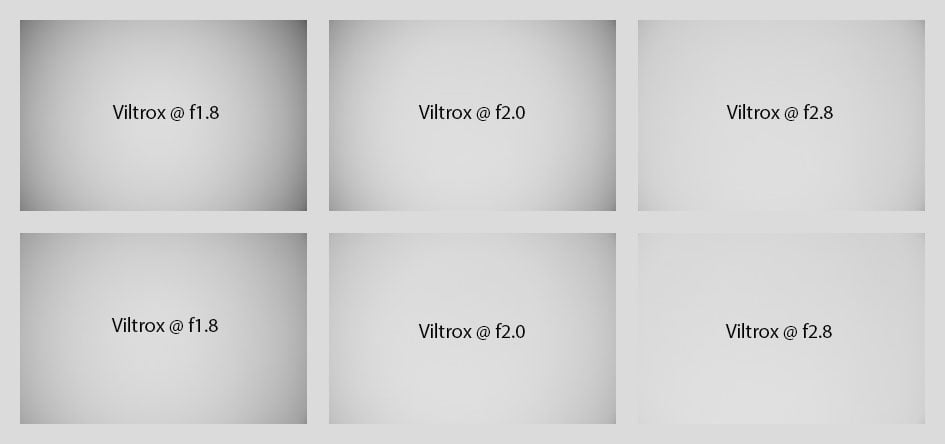
Above: Viltrox AF 50mm f1.8 with vignette control Off (top), and vignette control Normal (bottom) at f1.8, f2.0, f2.8
The sample images above show that with the lens profile applied vignetting of the Viltrox is relatively mild wide open. Vignette control set to Normal lifts the extreme corners about 0.5 EV at f1.8. Adobe’s RAW converter automatically applies shading compensation as it was set in camera – but you cannot alter the setting in postprocessing.
That’s different with distortions: Adobe’s RAW converter ignores what was set in camera and always corrects them. Still some of the pin-cushion distortions remain not fully corrected. When you activate the lens profile in CRAW the distortions are further straightened out plus a bit of overcompensation of light falloff is introduced too (see below). But you can easily dial that effect back.
Distortions of Viltrox AF 50mm f1.8: JPG with distortion compensation Off (top), RAW with lens-profile from CRAW (bottom)
It does not look like a strong effect from using the lens profile in CRAW in the example above. But the closer you focus the more extreme the pin-cushion distortions become: Have a look at the sample image of a bookshelf below. In this case switching the additional lens profile on does make a huge difference.
Rendering of point-light sources at night-shots
Night-shots pose a different challenge for lenses as the contrast is even higher than under bright sun and point-light sources can reveal some weaknesses such as coma, haloing and colour-aberrations that do not show up as prominently in other test-shots. The 100% crops below the main image show the effect of coma in the FF/FX-corner of the Viltrox at various apertures:
Above: Viltrox AF 50mm f1.8 at f1.8; click image for 4k version, here for large original

Above: Viltrox AF 50mm f1.8; 100% crops from the FF/FX-corner at f1.8 (left), f2.0 (middle), f2.8 (right)
The Viltrox AF 50mm f1.8 shows some coma at f1.8 and f2 – as the blue “wings” above indicate. But from f2.8 onwards it’s not a big issue.
Bokeh quality
This test is for the rendering of point-light sources in an out-of-focus background. The circle of confusion that is produced by this test is pretty indicative of Bokeh performance (in the background) and light fall-off. Ideally the out-of-focus image of the point-light is evenly lit and perfectly circular, with no “onion-rings”, and without coloration. Large aperture lenses normally produce an effect known as “cat’s eye” the further away from the optical axis the point-light is projected. This is due to optical vignetting in the lens barrel when light enters the lens from an angle.
The crops below the main image are from the center, APS-C/DX-corner, and FF/FX-corner resized to make them comparable across all my reviews.
Above: Viltrox AF 50mm f1.8 at f1.8; click image for 4k version
Above: Viltrox AF 50mm f1.8 at f1.8; click image for 100% crops
Above: Viltrox AF 50mm f1.8 at f2.8; click image for 100% crops
Above: Viltrox AF 50mm f1.8 at f4.0; click image for 100% crops
The diameter of the Bokeh balls in the center is determined by the entrance pupil of the lens: Thus all 50mm f1.8 lenses produce Bokeh balls that are the same size at identical magnifications. So the “beauty” of the balls becomes the distinguishing factor. Unfortunately the Viltrox is plagued by nasty onion-rings and some green outlining. This may not have such an obvious effect on backgrounds without specular/bright highlights but shots of a candlelight dinner will certainly suffer. Compression of the circle towards the corners is clearly visible even in the APS-C/DX-corner at f1.8 but is practically gone at f2.8. The aperture blades of the Viltrox are not well-rounded and show up already at f2.8.
Now let’s see how this analysis of out-of-focus point-light sources translates into Bokeh-performance shooting a book-shelf. Again, the crops of the foreground, the middle-ground, and the background below the main image are resized to make them comparable across all my reviews.
Above: Viltrox AF 50mm f1.8 at f1.8
Above: Viltrox AF 50mm f1.8 at f1.8; click image for 4k version, here for large original
Above: Nikon Z 50mm f1.8 S at f1.8; click image for 4k version, here for large original
Above: Sony FE 50mm f1.8 at f1.8; click image for 4k version, here for large original
Above: Voigtländer 50mm f2.0 APO-Lanthar at f2.0; click image for 4k version, here for large original
The Viltrox produces a pretty smooth Bokeh albeit with green coloration in the transition zone towards the background. The (less important) foreground looks a bit nervous but all-in-all I’d rate the Viltrox better than the Sony FE. In the background the Viltrox looks even softer than the Z-Nikkor and the Voigtländer.
Looking at another crop (now at 100%) from the same images showing the ruler has the Viltrox again look the softest with the Z-Nikkor taking second place followed by the Sony FE and Voigtländer.
Above: Viltrox AF 50mm f1.8 at f1.8; click image for 4k version, here for large original
Above: Nikon Z 50mm f1.8 S at f1.8; click image for 4k version, here for large original
Above: Sony FE 50mm f1.8 at f1.8; click image for 4k version, here for large original
Above: Voigtländer 50mm f2.0 APO-Lanthar at f2.0; click image for 4k version, here for large original
Flare, glare, ghosting, and sun-stars
Catching a strong light-source shining directly into the lens is always a risky business: it could produce strange colorful ghost-images or reduce contrast considerably through flare and glare. The appearance of flare and ghosting depends on factors like the aperture and the angle of the light hitting the lens. So to judge the proclivity of the Viltrox AF 50mm f1.8 for these artifacts I went through a series of well calculated shots against a strong light source to provoke glare and ghosting. The lens hood was mounted in all shots. Following are some of the more extreme example results. The little bright square inset in the upper left shows the respective area with an exposure compensation of +3 EV to make it easier to see which levels of black the lens renders at that point:
Above: Viltrox AF 50mm f1.8 at f11; click image for 4k version or here for +3 EV exposure compensation
Above: Viltrox AF 50mm f1.8 at f1.8 click image for 4k version or here for +3 EV exposure compensation
The Viltrox does produce some flare, glare and ghosting but the images still keep a good level of black outside the immediately affected areas.
The Viltrox AF 50mm f1.8 produces well defined sunstars already at f4. And the more you stop down the bigger they get:

Above: Sunstars from the Viltrox AF 50mm f1.8 at f4.0, f5.6, 100% crops
Next check out my sample images!
Check prices on the Viltrox AF 50mm f1.8 at B&H or Adorama. Alternatively get yourself a copy of my In Camera book, an official Cameralabs T-shirt or mug, or treat me to a coffee! Thanks!